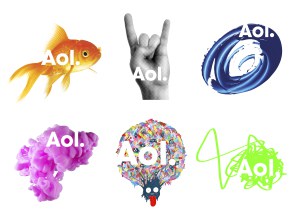
Edward Wasserman
The Comcast-NBC deal that would bring one of the nation’s largest television networks under the control of the nation’s largest cable operator has not enjoyed the smoothest sailing since the deal was first rumored more than a month ago.
Consumer advocates oppose the deal because it would give Comcast too much control over the video content it would now own, and some industry leaders suggest the era of integration is over, warning bigger is not always better.
“The only beneficiaries of this deal are the industry titans who already enjoy too much market power,” said Josh Silver, executive director of Free Press. Free Press is mounting a national campaign for consumers to become involved and help block the deal.
“If this deal goes through, Comcast would have control of marquee content and three major distribution platforms: Internet, broadcast and cable,” Silver said. “We’ve never seen this kind of consolidated control across so many platforms.”
Edward Wasserman, Knight professor of journalism ethics at Washington and Lee University, penned a scathing review of the proposed deal. “Stop Comcast’s Power Grab” quotes a bitter Ted Turner, who saw his media empire fall from his control several years ago under the super-structured AOL-Time Warner deal:
“Big media today wants to own the faucet, pipeline, water and the reservoir. The rain clouds come next,” Turner wrote in a Washington Monthly article five years ago indicting big corporate media control.
The concept of vertical integration in media involves companies owning as much of the content and distribution as possible. In a best case scenario, one company would control every element, from the production to the sales and distribution of that content. The more you control in-house, the less you have to pay or answer to someone else. Wasserman picks up the story:
And vertical integration is why Comcast, the country’s biggest owner of cable systems, the company that decides which networks reach one of every four U.S. homes, is drooling over NBC Universal. The deal, if it happens, would be a staggering one.
NBCU, in short, is a mammoth content machine. And, Comcast, though chiefly an immensely rich operator of cable pipes, isn’t just the $34 billion-a-year utility whose bill you bellyache about every month. It, too, covets content. It tried to buy Disney in 2004, and it owns all or part of 20 cable networks, including E! Entertainment Television, Style, G-4, the Golf Channel and a bunch of national and regional sports channels.
And now it wants NBCU. One analyst estimated that combining the content arms of the two companies would bring roughly one-quarter of the country’s TV programming under a single owner. Another said the merged entity would control one of every five hours of programming.
[…]
The usual objections to such deals have to do with the outsized economic clout the resulting colossus would wield. Scale emasculates market discipline. When you control access to 24 million homes, you aren’t ruled by prevailing prices, you set them. Recession? Comcast is squeezing $6 more per household now than it was a year ago, and its profits were up 22.5 percent last quarter.
Very nice, but when you own the programs, too, you can make sure your networks get delivered even when that means elbowing other producers aside. You can strong-arm your competitors — satellite companies, for instance — by threatening to withhold popular networks or forcing them to carry the dogs as well. You can cut deals with other distributors who want the shows they control flowing through your pipes. You get your way.
Naturally, you’ll resist innovation unless you control it. Comcast would get a 30-percent stake in Hulu, the upstart distributor of first-run Hollywood programming via the Internet — a huge potential threat to cable operators. Subscription cable is Comcast’s bread and butter, and a business that makes $944 million on quarterly revenue of $8.8 billion is some business. Comcast will make sure that online’s future doesn’t endanger its own.
[…]
The whole point of vertical integration is to secure unfair advantage, to unlevel the playing field. And besides, since when is avoiding the worst the best we can hope for? It has been longstanding public policy to encourage localism, diversity and competition in the media business. It’s time to dust off that policy and give it some teeth by blocking this ridiculous and dangerous deal.
CNBC’s John Faber got some industry insider perspective from Dr. John Malone, a power player in the cable television industry during his reign at Tele-Communications, Inc., which used to own cable systems now largely a part of the Comcast empire.

Dr. John Malone
As far as Malone is concerned, this deal could herald a radical transformation away from traditional broadcasting models and “free TV.”
Malone believes America could be on the verge of dumping traditional broadcast network-local affiliate distribution of programming and switching to a “cable-centric” model where television programming is no longer distributed for free over broadcast television, or perhaps a hybrid approach where half of today’s television networks become cable/broadband-only.
He believes the government could be persuaded to support such a model if it meant returning broadcast spectrum back to the government for resale to the highest bidder, presumably for wireless broadband applications.
Malone’s vision leaves big vertically-integrated players like the broadcast networks and cable operators as big winners, owning and controlling programming, distribution, and all of the advertising slots, and cutting local television stations out of the deal.
Losers? Independent local television stations and viewers that eschew pay television services like cable and satellite and rely on free over-the-air broadcasting. “Free” may be an unsupportable business model, at least in Malone’s world view. As many television stations are independently owned and operated, their concern for future viability is also sure to be an issue in the deal, Malone tells Faber.
Malone’s remarks are nothing unusual for the controversial cable mogul. Al Gore once referred to Malone as the “Darth Vadar” of cable, leading a cable Cosa-Nostra with an agenda of a monopolist bent on dominating the television marketplace.
[flv]http://www.phillipdampier.com/video/CNBC Faber Report John Malone 11-23-09.flv[/flv]
Dr. John Malone talks about the Comcast-NBC Universal deal in this CNBC Exclusive with John Faber, aired earlier today. (4 minutes)
 For any deal to consummate, Comcast and NBC Universal need the consent of Vivendi, the French conglomerate which now finds itself in the catbird seat. The Paris-based media concern is asking for several hundred million dollars more than NBC-owner General Electric is prepared to part with, sources tell today’s Wall Street Journal:
For any deal to consummate, Comcast and NBC Universal need the consent of Vivendi, the French conglomerate which now finds itself in the catbird seat. The Paris-based media concern is asking for several hundred million dollars more than NBC-owner General Electric is prepared to part with, sources tell today’s Wall Street Journal:
GE has offered Vivendi something in the neighborhood of $5 billion for its stake, according to people familiar with the matter. That is lower than the value implied by the deal GE has tentatively negotiated with Comcast. The GE-Comcast deal would value NBC Universal at about $30 billion. Allowing for debt that NBC Universal now carries, that value would imply Vivendi’s equity stake is worth somewhat less than $6 billion.
GE is offering Vivendi less than the value implied by its Comcast deal because it believes Vivendi wouldn’t be able to fetch as much through a public sale that it also has the right to pursue, according to people familiar with the talks.
Vivendi, meanwhile, has asked for a price somewhere from the “mid-five” billion dollars to closer to $6 billion, according to people familiar with the matter. Two people familiar with the matter said GE and Vivendi were within about $500 million in price.
Vivendi has also asked for deal guarantees, according to people familiar with the matter. Those guarantees could include GE paying for at least part of its stake before any Comcast agreement closes. Vivendi doesn’t want to assume the risk that GE’s deal with Comcast could be blocked by regulators in Washington, or could otherwise fall apart, according to a person familiar with the matter.
Most deal-watchers predict Vivendi will eventually part with its stake after it gets what it wants.
One of the Journal‘s sources said it was unlikely those working out the deal would let “a few hundred million” stand in the way.


 Subscribe
Subscribe





